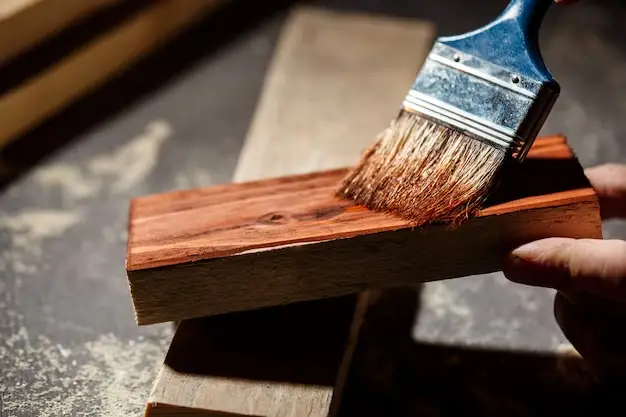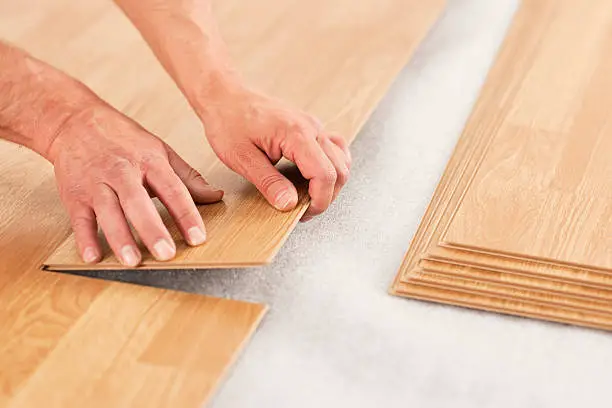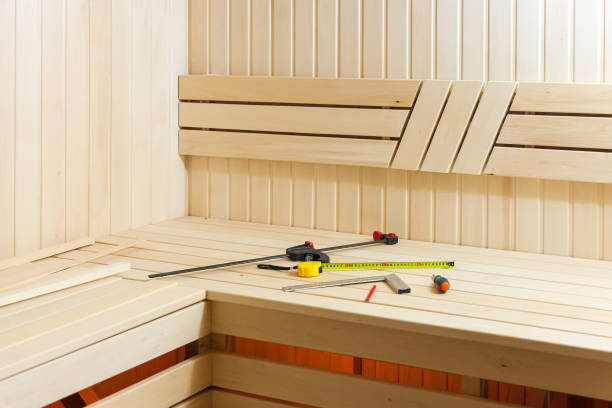Uncover the Magic of Sanding Sealer

Every woodworking project is a testament to craftsmanship, patience, and the meticulous attention to detail. But what if you could take your work to an even higher level of excellence? That’s where the magic of sanding sealer comes into play.
Sanding sealer is a remarkable tool in the woodworking arsenal. It acts as a base coat that preps the wood surface for a smooth and even final finish. It provides numerous benefits, including reduced sanding effort, enhanced wood grain, and the elimination of blotches.
Understanding Sanding Sealer
Typically, sanding sealer is a solution made from lacquer or varnish, combined with zinc stearate, a soapy substance that makes sanding easier and smoother. The core function of sanding sealer is to fill the pores of the wood, preparing it for a topcoat.
The application of a sanding sealer leads to an impressive improvement in the wood’s surface. It creates a smooth, even, and professional-grade appearance. It’s essentially a prerequisite for high-quality woodworking finishes.
Benefits of Sanding Sealer
A sanding sealer provides multiple benefits that can significantly enhance your woodworking project’s outcome.
Reduced Sanding Effort
Sanding sealer, as its name suggests, is designed to make the sanding process more efficient. The sealer fills in the wood’s pores and creates a uniform surface that is easier to sand.
Elimination of Blotches
Without a sanding sealer, wood stain can be absorbed unevenly, causing blotches. By sealing the wood, it ensures an even stain absorption, resulting in a smoother finish.
Enhanced Wood Grain
The application of sanding sealer accentuates the natural grain of the wood, which can be visually pleasing, especially when working with high-quality timber.
How to Use Sanding Sealer
The process of using sanding sealer is simple but needs precision. You should first prepare the wood by sanding it down to a smooth finish. Then, using a brush, apply a thin coat of sanding sealer. Allow it to dry according to the manufacturer’s recommendations before gently sanding the surface with fine-grit sandpaper. This prepares the wood for the final finish, ensuring a smooth, even coat.
It’s crucial to remember that not all projects require sanding sealer. If you are working with oil-based polyurethane, the sanding sealer is unnecessary as the polyurethane itself can seal the wood effectively.
Choosing the Right Sanding Sealer
Choosing the right sanding sealer is an essential part of a woodworking project. You should select the sealer that best suits the type of wood you’re working with and the finish you intend to use. Ensure the sanding sealer is compatible with your topcoat.
When to Avoid Sanding Sealer
Even though sanding sealer can bring several benefits to your woodworking project, it is essential to know when it should be avoided. The two common scenarios where using a sanding sealer isn’t advised are:
Oil-based Finishes
If you’re applying an oil-based finish such as polyurethane or Danish oil, avoid using a sanding sealer. The oil-based finish itself is enough to fill the wood’s pores, negating the need for a sealer.
Certain Wood Types
Woods like cherry, maple, or birch typically absorb stains evenly. Using a sanding sealer on these types of woods might obstruct the absorption process, leading to a less desirable finish.
Care and Safety when Using Sanding Sealer
Safety should be a priority when working with sanding sealers. These are chemical solutions, and they should be handled with care.
Ventilation
Always ensure you are working in a well-ventilated area when applying sanding sealer to avoid inhaling harmful fumes.
Protective Gear
Use gloves to protect your skin and safety goggles to guard your eyes from potential splashes of the product.
Safe Storage
Store sanding sealer in a cool, dry place away from open flames, as it’s usually highly flammable.
Conclusion
The universal sanding sealer is a versatile ally for any woodworking project, be it furniture, cabinets, or any material crafted from bare wood like spruce. Whether you prefer the universal type or an oil-based sanding sealer, the steps remain the same – the wood needs to be thoroughly sanded before the sealer, acting as a lubricant, is applied in careful coats. By following this procedure, you can ensure an even, smooth, and polished end result that is bound to meet customer expectations. The charm of finished furniture or cabinets enhanced with a sanding sealer is a testament to the woodworker’s attention to detail and dedication to craftsmanship.
While sanding sealer is not necessary for every woodworking project, it can provide a significant enhancement in your woodwork’s overall quality. Whether it’s smoothing the finish, reducing blotching, or highlighting the wood grain, sanding sealer is a potent ally in creating a perfect piece of woodwork. Remember to always read and follow the manufacturer’s instructions, whether you are a beginner or a seasoned woodworker. By adding this step to your woodworking process, you will elevate your craftsmanship and produce results that truly stand out.
In summary, the power of sanding sealer lies in its ability to prepare and enhance wood surfaces for the final finish. Whether you’re a woodworking enthusiast or a professional, understanding and using sanding sealer can help you achieve a polished and refined look in your projects. Remember, the mastery of any craft lies in the appreciation of every step and tool involved in the process. Adding sanding sealer to your toolset will take your woodworking journey to the next level.






